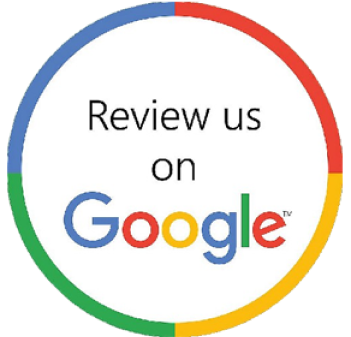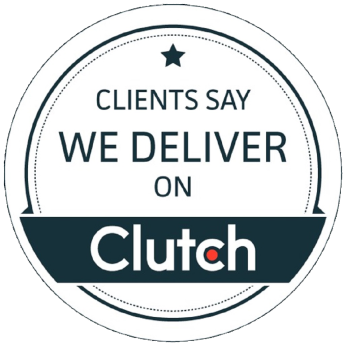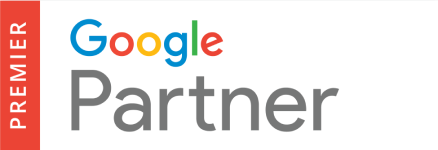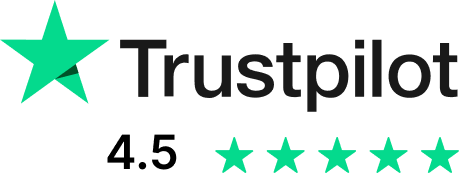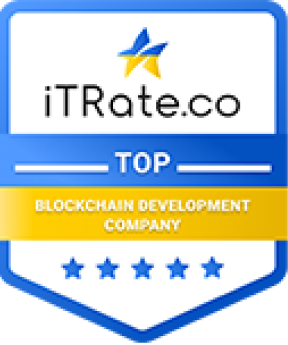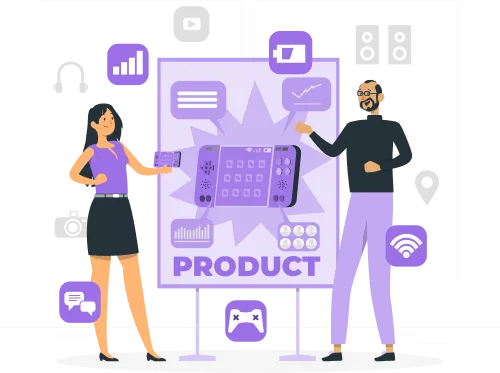
Product Discovery Services
Product discovery is the iterative and customer focused process of identifying the defining and refining a new product or feature that addresses a specific problem or need. It involves cross functional teams by including product managers, designers, engineers and stakeholders for working together to understand user pain points and develop solutions.
Overview of Product Discovery
Product discovery begins with businesses talking to their customers through interviews and surveys. They also create user person to better understand their audience and figure out what problems they face.The MVP (Minimum Viable Product) concept is pivotal as it encourages the development of a basic version of the product to test its viability. User testing is an integral part that involving usability testing, A/B testing and other methods to gather user feedback.
The Uses of Product Discovery
Product discovery is the foundation for generating innovative ideas and concepts to solve identified problems. By continuously testing and validating assumptions, the product discovery minimizes the risk of building a product that won't succeed in the market.Product discovery aligns with lean principles such as iterative development and continuous improvement which can result in more efficient and cost effective development processes. Product discovery involves conducting experiments and using feedback to validate or adjust product concepts and hypotheses.
Services Offering
User Research, Market Research, Ideation and Innovation, Prototyping and MVP Development, User Testing and Feedback, Data Analysis, Lean Product Development, Customer Development, Validation and Learning.We also offer Problem Validation, Scaling and Growth Strategies, Technology Integration, Cost Benefit Analysis, Market Entry Strategy, Product Roadmapping etc.
Generation of Potential Solutions
Once customer problems are identified, the next step in product discovery involves brainstorming and generating potential solutions. This creative phase encourages diverse ideas and approaches to solving the identified problems.Teams explore various concepts and innovations that align with the goals of improving user experiences and addressing market demands.
Iterative Refinement
Product discovery is an iterative process and feedback from testing informs refinements to the proposed solutions. Teams analyze the results of testing identify areas for improvement and make necessary adjustments.This iterative approach ensures that the final product aligns closely with customer needs and maintains a high level of usability and satisfaction.
Feedback Loops
Continuous feedback loops are integral to product discovery. Regularly gathering feedback from users, stakeholders and team members throughout the development cycle ensures that the product remains aligned with evolving needs and expectations.These feedback loops contribute to ongoing refinement and improvement, enhancing the overall quality of the final product.
Rapid Prototyping
Rapid prototyping is a key aspect of product discovery, allowing teams to quickly create tangible representations of potential solutions.These prototypes provide a hands on experience for users to interact with, offering valuable insights early in the development process and facilitating rapid iteration based on user feedback.
Market Fit Assessment
Product discovery involves assessing the product's market fit how well it meets the demands and preferences of the target audience.This evaluation helps determine whether the product addresses a genuine market need and has the potential for widespread adoption ensuring that development efforts align with market realities.
Highlights of Our Product Discovery Services

User Centric Approach
A user centric approach to product discovery helps to reduce the risk of building products that users won't adopt and increases the likelihood of creating products that truly resonate with the target audience. It promotes a continuous cycle of learning and adaptation to ensuring that the end product meets user expectations and delivers value.

MVP Development
The MVP is the simplest version of your product that can address the core problem. It's designed to gather feedback and validate assumptions with minimal effort. Before building the MVP, conduct user research to identify user needs, pain points and preferences. This informs the MVP's features. Release the MVP to a small group of users or a beta audience. Gather feedback on usability and usefulness.

Effective Positioning
Effective positioning ensures your product aligns with customer needs and stands out in the market. Research the market to identify trends, competitors and opportunities that can inform your product positioning. Make decisions based on data and key performance indicators (KPIs) to continually adjust and refine your product's positioning.

Problem Validation
Ensure the identified problems are real and significant. Validate them through in depth research and data. Create minimal viable solutions or prototypes to test the proposed solutions quickly and cost effectively. Use data and feedback to make informed decisions about which problems to tackle and how to solve them.
Benefits of Product Discovery Services
Product discovery brings immense benefits by aligning solutions with customer needs, reducing development risks and fostering innovation. Through rapid prototyping and user-centric design, it ensures user satisfaction and market fit. Embracing lean methodologies, it promotes agility that enabling quick adaptation to changing requirements. By emphasizing data-driven decision-making, the process enhances the chances of creating successful products, ultimately optimizing development efforts and increasing of market success.
Clear Roadmap
A clear roadmap ensures that all team members are on the same page about the product's direction and priorities. It helps in prioritizing features or improvements based on user needs, business goals and market trends by making the best use of available resources. The roadmap helps to manage time effectively by setting deadlines and milestones for each phase for ensuring timely delivery.
Cost Savings
Product discovery minimizes costs by pinpointing and addressing potential issues early by preventing investment in low demand features. It ensures initial alignment with user needs to reducing the risk of costly late stage changes. Understanding user requirements upfront optimizes resource use and lowers the chance of expensive pivots or redesigns later in development.
Market Differentiation
Product discovery helps a business differentiate itself in the market by focusing on understanding the unique customer needs and solving distinct pain points. By modifying products and features to specific customer requirements, a company can stand out from competitors and create a attractive value proposition that sets it apart. This differentiation can lead to increased customer loyalty and a stronger market position.
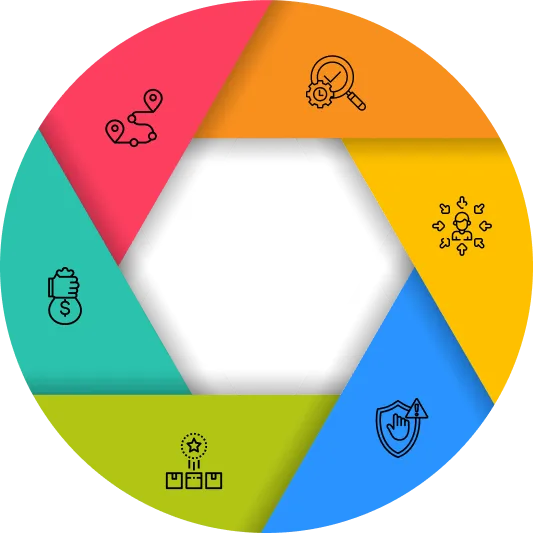
Idea Validation
Idea validation is the process of rigorously evaluating and testing the feasibility and potential of a new product or feature concept. Idea validation often involves multiple iterations and adjustments based on the feedback and data collected during the validation process. Determine whether the idea is scalable and whether it aligns with the organization's long term goals.
User Centered Design
A User Centered Design product discovery group aims to produce products that are not only functional and marketable but also genuinely useful and enjoyable for the end users. This approach often leads to higher user satisfaction and improved product success in the long run. UCD involves iterative prototyping and testing with users by ensuring that the product is refined based on actual user feedback.
Prevention of Expensive Pivots
Understanding user needs from the outset helps prevent expensive pivots or significant redesigns later in the development cycle. Product discovery allows teams to course correct early, aligning the product with market demands and avoiding costly changes that might be necessary if issues are identified only in later stages of development.
How Our Product Discovery Services Work
Team Formation
Team Formation in product discovery services that involves assembling a cross functional team of experts from various disciplines such as product management, design, development and user research. This team collaborates to initiate and drive the product discovery process. Build a diverse team that represents different areas of expertise to enabling a overall view of the product and its potential challenges.
Idea Generation
In the idea generation phase of our product discovery services, we accumulate creativity and innovation by brainstorming and developing a wide range of concepts and solutions. We encourage open discussions and brainstorming sessions to generate diverse ideas. No idea is initially dismissed; all possibilities are explored. Participants think broadly and consider unconventional approaches to problem solving.
Finalization
This includes user research, market analysis, competitive research and any other relevant data sources. The team prioritizes the insights and findings based on their significance and potential impact on the product's success. This involves identifying critical user needs, pain points and opportunities that should be addressed in the product. Key decisions are made regarding whether to proceed with the product development.
Post launch Support
Post launch support is an ongoing iterative process. The team continuously monitors and refines the product to ensure that it remains aligned with user needs and market demands. This includes conducting regular user testing and evaluating the product's performance against key metrics. The team prioritizes the identified issues and potential improvements based on their impact on user satisfaction and the product's success.
Our Comprehensive Product Discovery Services

User Research
User research is a crucial aspect of product discovery. It involves activities such as user interviews, surveys, observations and data analysis to gain insights into user behavior pain points and requirements. User research often leads to the creation of user person, which are fictional representations of different user segments. Persons help to design and development teams empathize with and design for specific user groups.

Iterative Development
This signifies that the product is not developed in a single linear cycle but rather through a series of iterations. The team plans the next phase of development which based on insights and feedback from the previous iteration. The team works on developing or improving the product based on the plan. The product is thoroughly tested to identify any issues or areas for improvement.

Stakeholder Engagement
Stakeholders may include company executives, investors end users or clients. The role of the expert team in stakeholder engagement is to facilitate effective communication and collaboration between different parties. They help gather insights and feedback from stakeholders to understand their requirements and translate this information into actionable plans for product development.
 and Design.webp)
User Experience (UX) and Design
UX and design professionals work closely with product managers, developers and other teams to align the product's design and functionality with its strategic goals and user requirements. These experts are responsible for the visual and functional aspects of the product. They create the product's overall look and feel by including the layout, color schemes, typography and interactive elements.
A Snapshot of Our Success (Stats)

Total Experience
0Years

Investment Raised for Startups
0Million USD

Projects Completed
0

Tech Experts on Board
0

Global Presence
0Countries

Client Retention
0
Scope and Focus Areas of Product Discovery






Diverse Product Discovery Methods We Follow
User Interviews
A user interviews involve direct conversations with potential users to understand their needs, challenges and preferences. This type of product discovery aims to gather qualitative insights, providing a firsthand understanding of user behaviors and motivations. Through open ended questions, interviewers can uncover valuable information that informs the development of user-centric solutions.
Surveys And Questionnaires
Surveys and questionnaires are systematic approaches to collect quantitative data from a larger audience. By reaching a broader user base, this type of product discovery allows for statistical analysis of trends, preferences and pain points. Surveys are effective for obtaining a comprehensive overview of user opinions, helping prioritize features or improvements based on collective feedback.
Competitor Analysis
Understanding the competitive landscape is crucial in product discovery. Competitor analysis involves studying similar products or services in the market. By evaluating competitors' strengths, weaknesses and unique features, product teams gain insights into market expectations and potential differentiators. This type of discovery aids in positioning a product effectively within the market.
Data Analytics
Leveraging data analytics provides a quantitative perspective on user behaviors within existing products or platforms. By analyzing user interactions, patterns and engagement metrics, product teams can identify areas for improvement and validate assumptions. This data-driven approach enhances the precision of decision making in product discovery aligning solutions with actual user behaviors.
Customer Support And Feedback Analysis
Examining customer support interactions and feedback provides a wealth of information for product discovery. This type involves analyzing customer queries, complaints and suggestions to understand pain points and areas for improvement. By tapping into the direct feedback from users product teams can address common issues, prioritize enhancements and ensure ongoing customer satisfaction.
Focus Groups
Focus groups bring together a small, diverse set of individuals to discuss and provide feedback on a product or concept. This interactive type of product discovery encourages group discussions that allowing participants to share their perspectives and reactions. Focus groups are particularly useful for exploring nuanced aspects of user perception and attitudes toward a product.
We Start Here
Product discovery initiates with a deep dive into user needs, employing methods such as interviews and surveys. Simultaneously, market analysis unveils industry trends and competitor landscapes. This phase extends to feasibility assessments to ensuring proposed solutions align with technical and financial considerations. Prototyping follows, allowing iterative refinement through user testing. This iterative approach ensures the final product not only addresses identified problems but also resonates effectively with user expectations, laying a robust foundation for successful development.

Long-Term Vision
A long term vision should align with this purpose and the extensive mission of the company. Consider the product's sustainability and scalability over the long term. Assess how the product will adapt to changing market conditions, accommodate growth and remain financially viable.

User Education
Conduct user research, surveys and interviews to gain insights into what users want to learn for their preferred learning styles and the challenges they face. Ensure that the educational content you provide aligns with the user's goals and interests. Explore ways to make the learning experience attracting and interactive.

Empowerment
Empowerment products should be designed with the user at the center for addressing their specific challenges and aspirations. Empowerment often comes through knowledge, so your product should offer valuable insights and resources. Ensure your product is accessible to a wide range of users by including those with different abilities, backgrounds and levels of expertise.

Clear Direction
Having a clear direction often involves a deep understanding of the target users and their needs. Clarity in direction allows for better prioritization of features and requirements. Product discovery teams can identify what features are essential, what can be deferred and what can be excluded together to launch a minimum viable product (MVP).
Why Choose Tanθ for Your Product Discovery Services?

Proven Track Record
The product discovery services include a thorough analysis of the market landscape. With a proven track record in market research .we assess competitors, industry trends and emerging opportunities. This in-depth analysis guides strategic decision-making, allowing your product to be positioned effectively and gain a competitive edge within the broader market.

Commitment To Delivering Value
Our commitment is to deliver tangible value through our product discovery services. We focus not only on meeting project requirements but also on exceeding expectations. By aligning our efforts with your business objectives and user needs, we aim to create products that not only solve problems but also contribute significantly to your overall success in the market.

Agile Mindset And Adaptability
Opting for our product discovery services means embracing an agile mindset and adaptability. We navigate the uncertainties of product development with flexibility responding quickly to changes in user feedback, market conditions or emerging trends. This adaptability ensures that your product remains resilient and capable of meeting evolving challenges throughout its development lifecycle.

Innovation-Driven Solutions
Innovation is a cornerstone of our product discovery approach. We are dedicated to exploring creative and innovative solutions that go beyond conventional approaches.We strive to deliver products that not only address current market needs but also set new standards and capture the attention of your target audience.
FAQs - Product Discovery Services
Latest Blogs
Uncover fresh insights and expert strategies in our newest blog! Dive into the world of user engagement and learn how to create meaningful interactions that keep visitors coming back.Ready to transform clicks into connections?Explore our blog now!

- Games

- India

- United States

316 8th Avenue, New York, NY 10012, United States

[email protected]

- Canada

40 A, 100 Main St E, Hamilton, Ontario L8N 3W7

[email protected]

- UAE

406, Building 185 Street 10,Jebel Ali Village,Discovery Gardens

[email protected]

- United Kingdom

28 S. Green Lake Court Fleming Island, FL 32003

[email protected]







